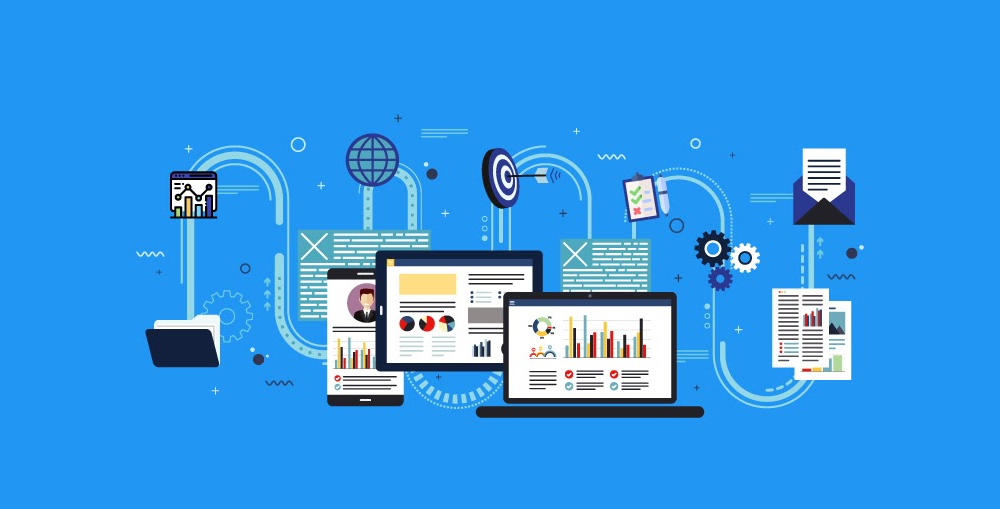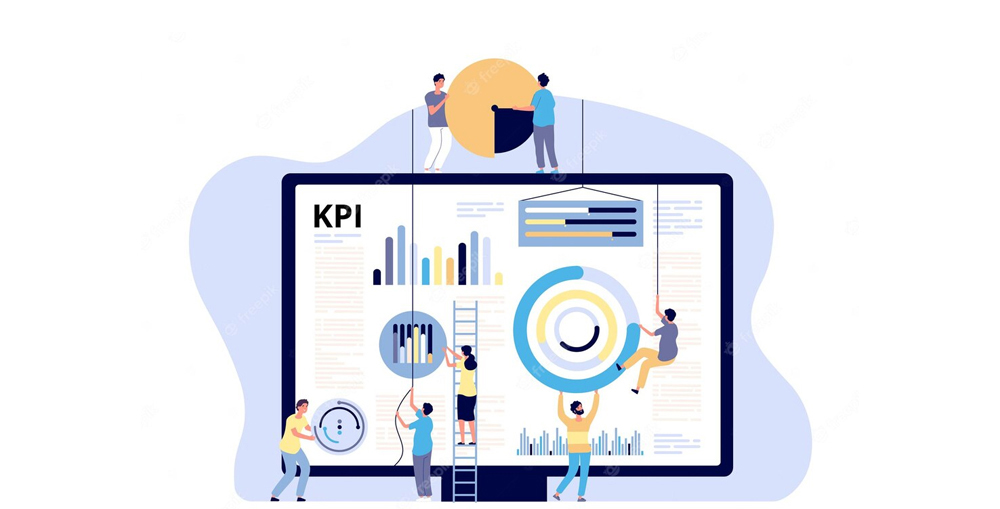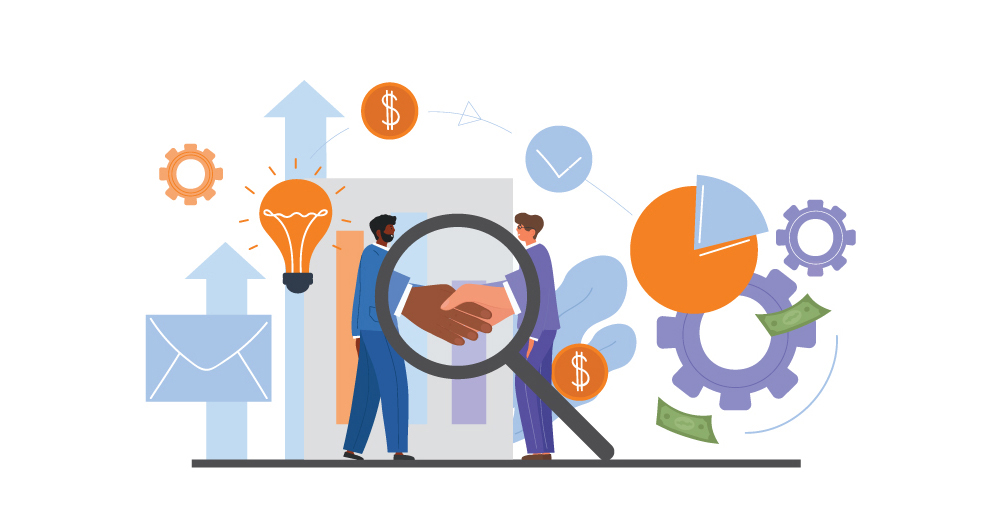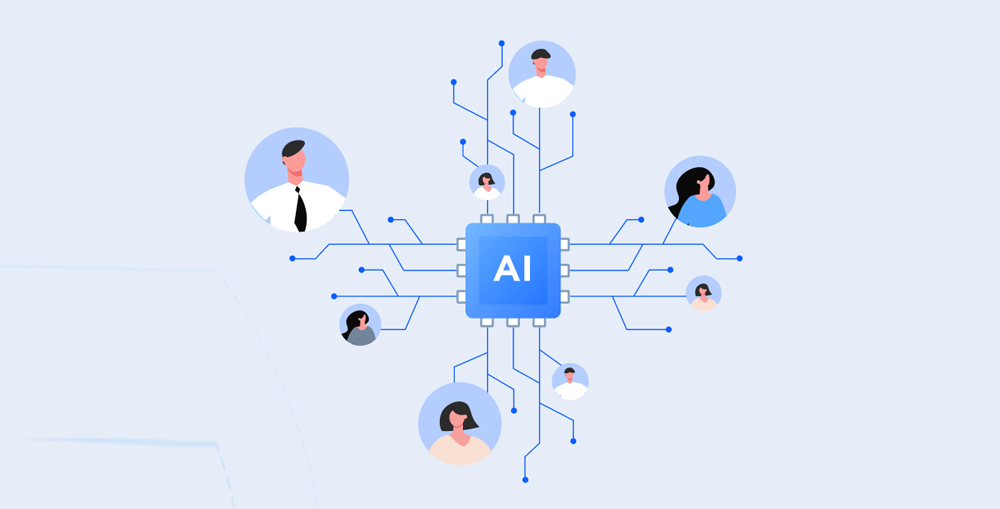In a modern competitive market landscape it is crucial that a business fully leverage the true potential of its workforce. The HR is responsible for ensuring every employee is working at its full potential while being happy and satisfied with their work. The employee engagement is a crucial function because it can impact each and every aspect of the business such as operational efficiency, technical capabilities, product and service quality, customer experience, employee satisfaction, profitability, etc. A performance management system provides a comprehensive framework, which help businesses in performance management process and it can greatly increase employee engagements. The performance management systems are designed to align individual employee performance with the high-level organizational goals and strategic objectives.
The performance management system seamlessly integrates various processes such as performance evaluation, feedbacks, reviews, appraisals, goal setting, etc. The performance management system is a modern software based solution which offers various tools and features which aid in performance management tasks. The performance management system is equipped with advance data collection tools, analytical reporting tools, and various other features which can help in performance management activities. In this blog we will discuss the role of performance management in employee engagement.

What is Employee Engagements?
Employee engagement is not just a single measurable substance, it is an entire spectrum of emotions and feelings an employee could have towards their organization, individual job role, daily work, co-workers, or team. The employee engagement is absolutely essential for the success, here is why:
- Passion: Enthusiastic and passionate employees tend to work harder, as their work is very important for them and these types of employees are always read to meet new challenges.
- Dedication: The engaged employees are more dedicated towards their work and goals, they believe in organizational goals and understand the value of their contribution to it.
- Higher Purpose: Engaged employees believe in higher purpose, they feel their job role and work has a higher purpose which contributes to something higher-than themselves.
- Growth: The engaged employees tend to be more eager towards growth and development, they tend to outperform the poorly engaged employees and tend to be more productive and skillful.
- Recognition: The recognition and acknowledgement are the key factors, when employees feel valued they become more energetic, enthusiastic and dedicated towards their work.
See Also: Performance Management System: Best Practices
The business leaders and HR utilizes various methods and techniques to enhance employee performances. The performance management is one of the most widely used methods to increase employee engagement, productivity and efficiency. However, the traditional performance management methods are losing their impact, now a days, a modern software based performance management system is taking over. The modern performance management system provides a comprehensive framework coupled with modern performance management methods and practices. Businesses all around the UAE are adopting to modern performance management systems for higher employee engagements.

How Performance Management System Enhance Employee Engagements?
A modern day digital performance management system is a structured solution offering a comprehensive framework to implement modern and advanced performance management methods and strategies. The performance management system offers advanced monitoring and analytical tools, helping analyzing various aspects of individual and team performance. Furthermore the performance management system helps implementing policies to increase employee engagements and overall employee satisfaction.
See Also: What are the Features of a Best Performance Management System?
A well-implemented performance management system can greatly increase employee engagements:
- Goal Setting: The performance management system streamline goal setting process with in-built features for objective key results (OKRs), SMART goals, and customized KPIs. The performance management system also help communicating goals to individual employees.
- Alignment: When the employee goals are clear and communicated effectively, they knows what is expected from them, this also help them understanding how their efforts align with the high-level strategic goals and objectives.
- Advanced Feedback: The performance management system provides a systematic and structured approach to streamline communication and feedback, encouraging continuous feedback and more frequent interaction help boosting employee engagements.
- Employee Development: The performance management system not only monitor employee performance but it also help identifying strengths and weaknesses of the employees, highlighting the development opportunities and boosting employee competencies.
- Reward and Recognitions: Appraisals, rewards and acknowledgements are essential for boosting employee morale and when the employees are admired, valued and have a sense of importance they tend to be more engaged and perform well.

See Also: The Impact of Performance Management on Organizational Culture
Furthermore the performance management system offers a variety of features and tools which can be very helpful for the management to keep employees more engaged and productive. Businesses can also customize these tools and digital features of the system to enhance its impact and adoptability. Here are a few more features that can be integrated in a performance management system to boost employee engagements and satisfaction:
- Regular Feedback: A performance management system can help implementing a more frequent, regular, and continuous and even real-time feedbacks. The feedback is crucial in engaging the employees, it also keeps them motivated and help management course correct.
- Customized Software: The modern performance management system relies on a software application, the performance management system software should be customized as per unique business needs to amplify its impact and to boost employee engagements.
- Collaborative Culture: The performance management system can provide essential tools and features to enhance collaboration, communication and peer-to-peer feedbacks. Streamlined communication and peer recognitions help engaging and employees.
- Mentorship Program: The mentorship program can greatly increase employee engagements. Managers and senior employees can be appointed as mentors to guide and coach the new or inexperienced employees and help boosting collaborations.
- Training Program: When businesses invest in employees they tend to become more motivated and perform well. Personalized training programs, workshops, and learning opportunities can help boosting employee morale and increase their engagements.
With the advanced features of a performance management system businesses can conveniently foster a culture of highly engaged employees. Engaged employees tend to be more active, innovative, creative and confident. Employee engagements are crucial for higher performance and high-performing employees are crucial for long-term sustainable success.
See Also: 5 Performance Management Problems and How to Solve Them

Conclusion
Employee engagement is a powerful catalyst to boosting the entire organization’s performance, productivity and profitability. A modern performance management system is not just an appraisal tool used to evaluate the employees, but it is a highly structured and systematic approach to elevate the entire organizational culture. A digital performance management system comes with a customizable software application that can greatly enhance the impact of performance management.
The performance management system empowers employees, encourage communications, and provides a structured approach for regular and continuous feedback fostering a highly collaborative and connected organizational culture boosting employee engagements. In this blog we have discussed the role of performance management in employee engagement. If you want to learn more about the subject or if you want to our help to design and implement a bespoke performance management system for your organization, please feel free to contact us through our Contact Us page or leave a comment in the comment box below and we will get in touch with you soon.
See Also: Performance Management System Trends in 2023
See Also: Choosing a Performance Management System A Buyer’s Guide














